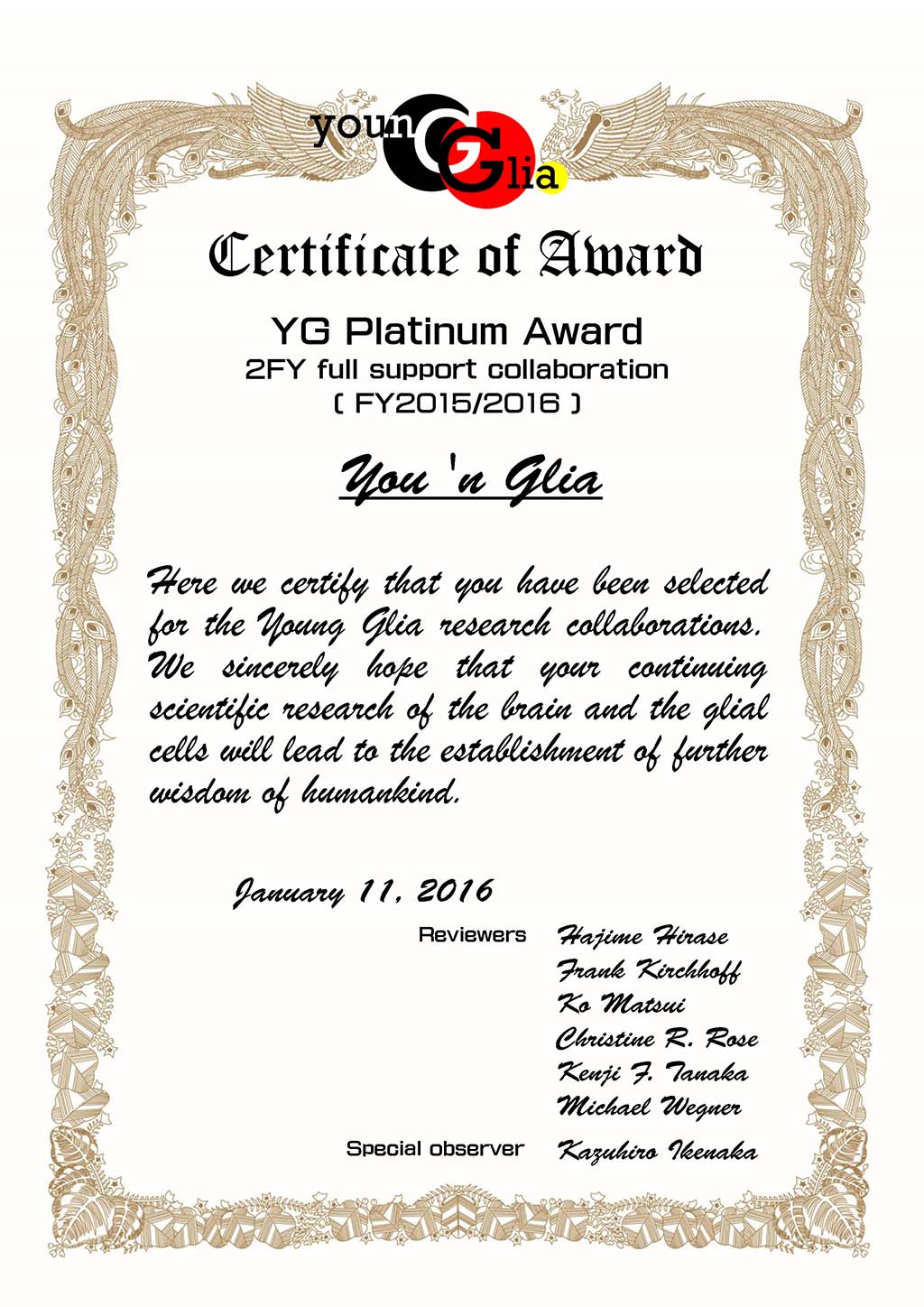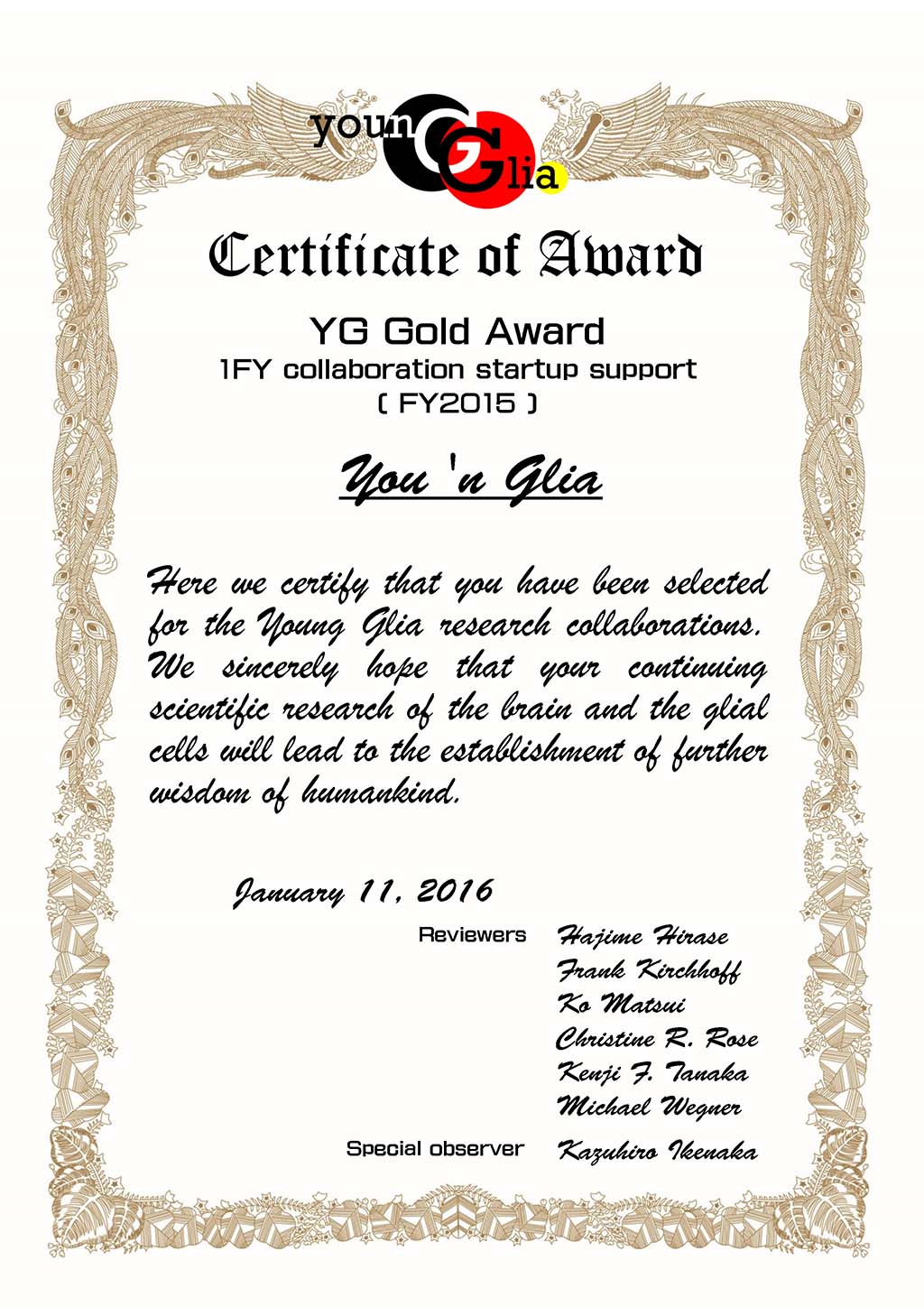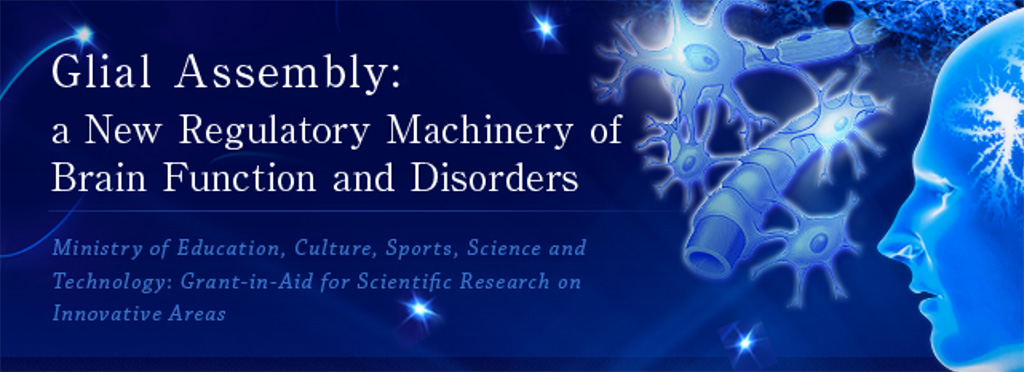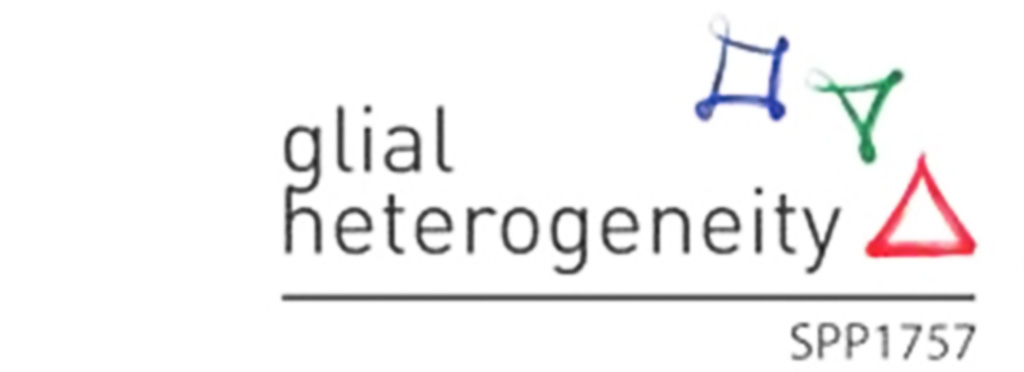Where is the location of our mind? It probably resides in the milky-white substance that sits inside your skull. But the half of the brain is glia. Let's, for the sake of argument, assume that our mind is embedded in these glial cells. What would be your counterevidence?
Young Glia
ABOUT
- Framework
- Young Glia
- Established
- November 15, 2015
- Budget source
-
Japan: Glial Assembly
Germany: Glial Heterogeneity
- Executive Supervisors
-
Japan: Dr. Kazuhiro Ikenaka
Germany: Dr. Frank Kirchhoff
- Project Overview
-
The purpose of this framework is to stimulate mutual exchange visits of young researchers of glial research. The collaborative research between Japan and German will be carried out by the young researchers. Applicants must be graduate students or have obtained a Ph.D. degree within the past five years. The collaboration must be approved by the priciple investigators on both sides but the original proposal and execution of the research itself must be done by the young researchers.
FY2015/2016 grant application
Young GliaResearch collaboration grant for junior scientists for FY2015/2016
Purpose:
The purpose of this grant is to stimulate mutual exchange visit of the applicants and for them to work together at the same place. The grant can be used to purchase a small amount of consumables.
Description:
Up to four research grants will be awarded for international collaborative glia studies between junior scientists.
Grant period:
Two years
Grant amount:
Up to 1,000,000 yen (about 7.500 EUR)/year (total amount of 2,000,000 yen). The grant can be used for travel of scientists from both countries, consumables, and other research-related expenses. Consumables must be purchased and used in Japan. The grants will adequately be complemented by additional support for traveling, housing, lab expenses etc. in Germany by the German Glia Consortium (SPP 1757) according to project requirements.
Eligibility and limitation:
Applicants (and co-applicants) must be graduate students or have obtained a PhD degree within the past five years. Applicants may be involved in multiple applications, but only one project will be awarded per laboratory.
Application process:
1. Applicants, their PIs, and attendees of the Tokyo meeting should study the list of potential collaborative laboratories and are advised to contact the PI(s) of the candidate laboratory(ies) beforehand.
2. Contacted PI will introduce a junior scientist in his/her laboratory. Thereafter a project will be discussed between the applicant and introduced junior scientist.
3. Alternatively, serendipitous project ideas resulting from interactions at the Tokyo meeting (10-11 January, 2016) are also welcome.
4. Proposals from plural Japanese and German scientists are acceptable as well as those from a duo.
5. Application should be within a single page, or e-mail text containing title, project description (<200 words), applicants' info (name, affiliation, PI name), and rough budget breakdown. Applications must be sent to Dr. Kenji Tanaka (kftanaka@keio.jp) before 22:00 of 10th January, 2016 (Tokyo time). Applicants are kindly asked to contact putative German collaborators as soon as possible to allow for reasonable flight booking from Germany. German partner labs are informed to submit short and informal pre-proposals by December 4.
6. Applicants are asked to present their final proposals on 11th January, 2016 in the Tokyo meeting (5 min project presentation including budget usage, 10-15 min interactive discussion). If applicants from Germany are not available for presentation, Japanese partner applicants will present the project.
7. Decisions will be made in the afternoon of 11th January, 2016. Formal paperwork, including an agreement from both PIs will follow in due course.
8. Applicants, their PIs and attendees of the Tokyo meeting must sign the non-disclosure agreement.
9. Consideration will be made to promote application and selection of the projects by female researchers in one or both of the countries.
Reviewers:
Frank Kirchhoff, Christine Rose, Michael Wegner
Kenji Tanaka, Hajime Hirase, Ko Matsui
Special Observer: Kazuhiro Ikenaka
Application forms:
YoungGlia2015-ApplicationGuidelines (PDF)
YoungGlia2015-ApplicationForm (MSWord)
FY2015/2016 collaboration proposal and selection meeting
Program:
The 1st Young Glia Meeting Program (PDF)
Keio University Mita Campus (Link)
- Poster size: 90 cm (width) x 150 cm (height)
- Poster titles (PDF)

* Dates are written as YEAR . MONTH . DATE, in that order.
2016.01.08 Keio University Mita Campus 北館大会議室
| 11:00- | Young Glia executive committee meeting |
|---|
2016.01.10 Keio University Mita Campus 北館ホール・ホワイエ
| 09:00 | Reception, Poster preparation |
|---|---|
| 09:30 | Opening remarks by Drs. Kazuhiro Ikenaka and Frank Kirchhoff |
| 09:40- | 1 min presentations by all poster presenters and all participants (including PIs) |
| 10:30- | Poster presentations (odd numbers) |
| 11:30- | Poster presentations (even numbers) |
| 12:30- | Lunch |
| 14:00- | Discussion time of collaborative research topics between young researchers. |
| 18:00- | Dinner |
| 20:00- | Matching and proposal time continues through the night. |
2016.01.11 Keio University Mita Campus 大学院棟313
| AM | Preparation of the collaboration proposal presentation. |
|---|---|
| Lunch | Taken individually. |
| 13:00- | Collaboration proposal presentations (in the presence of all participant) |
| 17:00 | All proposals are reviewed and selected. |

Selected FY2015/2016 Collaborations
YG Platinum Award - 2FY full support collaboration
"AMPA receptor targeting in glial plasma membrane domains"
| Japan member |
Dr. Akitoshi Miyamoto |
Dr. Hiroko Bannai Lab (RIKEN Brain Science Institute; Lab Head, Dr. Katsuhiko Mikoshiba) |
|---|---|---|
| Germany member |
Dr. Stephanie Griemsmann |
Dr. Nikolaj Klöcker Lab (Universität Düsseldorf) |
| Proposal |
Like neuronal AMPA receptors, glial AMPA receptors also fulfill important physiological functions that depend on their localization into specific subcellular plasma membrane domains. Here, we hypothesize that the molecular composition of glial AMPA receptor complexes is a major determinant of targeting them into such plasma membrane domains. |
|
| Exchange dates |
FY2015/FY2016 exchange has been executed. |
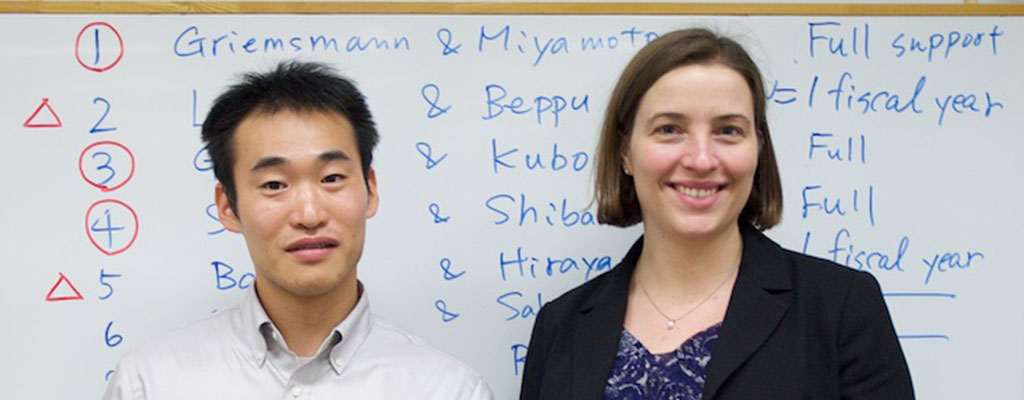
...to album
YG Platinum Award - 2FY full support collaboration
"Revealing glial functions mediated by cytosolic ions: using optogenetic control and live ion imaging"
| Japan member |
Naoko Kubo Yuki Suhara |
Dr. Ko Matsui Lab (Tohoku University) |
|---|---|---|
| Germany member |
Niklas Gerkau Behrouz Moshrefi-Ravasdjani |
Dr. Christine R. Rose Lab (Universität Düsseldorf) |
| Proposal |
Cytosolic ions such as proton, Na+, and Ca2+ are known to have specific functions in physiological behavior of glial cells. Here, we will attempt to image and control cytosolic ions using forefront technology and optogenetics. |
|
| Exchange dates |
Naoko and Yuki visited Niklas and Behrouz and the Rose lab from Feb 23 to March 9, 2016. Naoko Kubo stayed at Christine Rose's lab for whole 3 months in FY2016. |
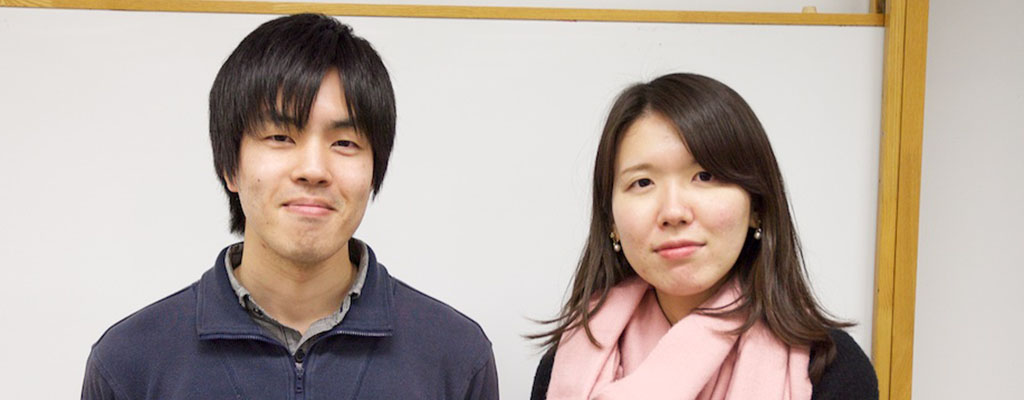
...to album
YG Platinum Award - 2FY full support collaboration
"The time dependency of Ca2+ excitability of astrocytes in somatosensory cortex after ATP-stimulation in awake mice"
| Japan member |
Dr. Keisuke Shibata |
Dr. Schuichi Koizumi Lab (Yamanashi University) |
|---|---|---|
| Germany member |
Laura Schlosser |
Dr. Frank Kirchhoff Lab (University of Saarland) |
| Proposal |
Astrocytic calcium signaling plays an important role in the neuron-glia network under normal and pathological function of central nervous system. However, the time dependency of the astrocytic Ca2+ excitabilities in S1 after ATP-stimulation and its molecular mechanisms are still unclear. |
|
| Exchange dates |
Plan for FY2015 has been executed in March-April 2016. FY2016 are still undecided. |
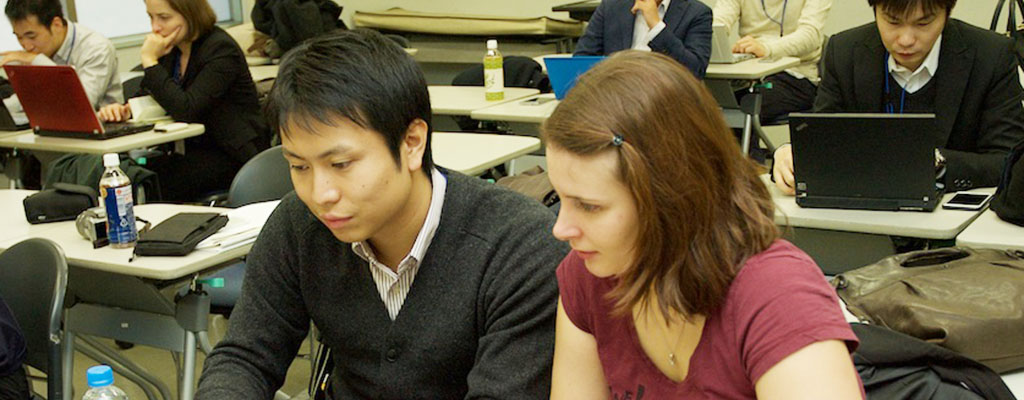
...to album
YG Platinum Award - 2FY full support collaboration
"Oligodendroglial cell generation of iPSC derived neural stem cells"
| Germany member |
Felix Beyer |
Dr. Patrick Küry Lab (Universität Düsseldorf) |
|---|---|---|
| Japan member |
Ryunosuke Kitajima |
Dr. Hiroo Imai Lab (Kyoto University; Lab Head, Dr. Hirohisa Hirai) |
| Proposal |
The efficiency of oligodendroglial cell generation by NSCs could be very low. It would be of eager interest to compare aNSC derived oligodendroglial cells from rat and mouse to the generated oligodendroglial cells of other species. |
|
| Exchange dates |
Felix visited Ryunosuke in March 2016. Ryunosuke visited Felix from October 16 to November 1, 2016. |
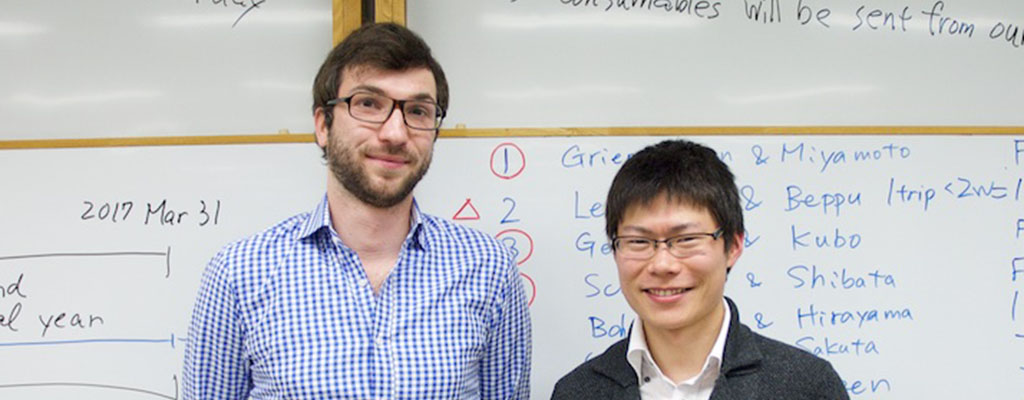
...to album
YG Gold Award - 1FY collaboration startup support
"Study of ammonium flux in brain tissue by optogenetic activation of neurons and astrocytes"
| Germany member |
Dr. Rodrigo Lerchundi |
Dr. Christine R. Rose Lab (Universität Düsseldorf) |
|---|---|---|
| Japan member |
Dr. Kaoru Beppu |
Dr. Ko Matsui Lab (Tohoku University) |
| Proposal |
Physiological levels of NH4+ induces the shunt of the astrocytic pyruvate from mitochondrial consumption to the production and release of lactate, suggesting that NH4+ play a central role in the coupling between astrocytic energy metabolism and neuronal activity. However, It is no clear how the brain tissue produces a flux of NH4+ through neurons to the astrocytic mitochondrial matrix. |
|
| Exchange dates |
Rodrigo visited Kaoru and the Matsui lab from Feb 9 to Feb 23, 2016. |
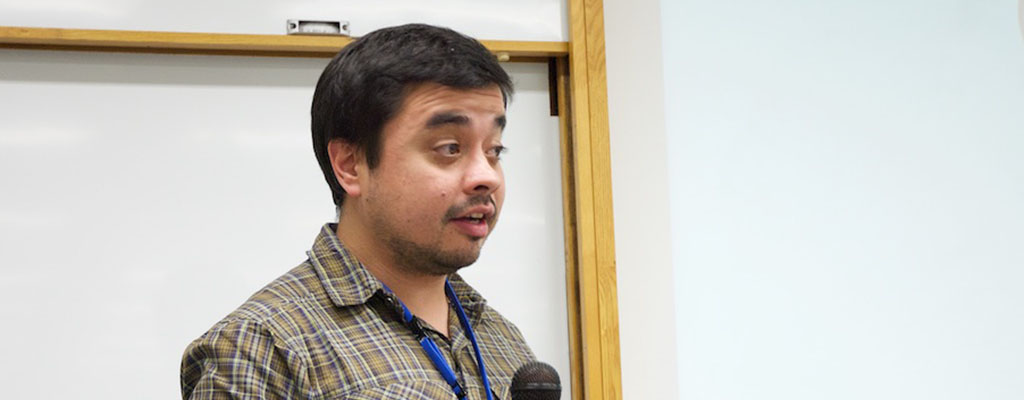
...to album
YG Gold Award - 1FY collaboration startup support
"Role of the glial P2Y1 receptor in cerebral ischemic injury"
| Germany member |
Carmen Bohn |
Dr. Frank Kirchhoff Lab (University of Saarland) |
|---|---|---|
| Japan member |
Dr. Yuri Hirayama |
Dr. Schuichi Koizumi Lab (Yamanashi University) |
| Proposal |
In this proposal, we want to address the role of the glial P2Y1 receptor in the injured cortex. We want to investigate if an upregulation/activation of the receptor after ischemia is beneficial or harmful for brain physiology. |
|
| Exchange dates |
Plan for FY2015 has been executed in March-April 2016. |
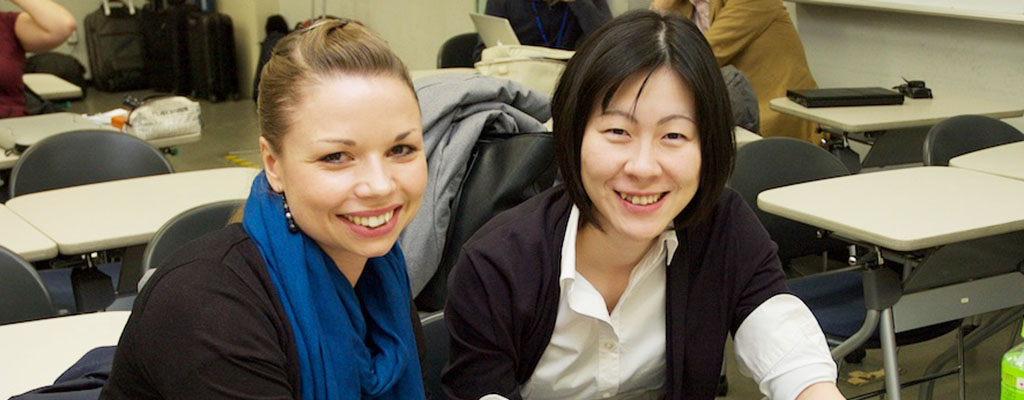
...to album
Certificates with individual names were distributed to honor the awardees.
YG Silver Award - Travel grant for YG meetings
"Travel grant for YG meeting @ Tokyo Jan 2016"
| Germany member |
Felix Beyer, Carmen Bohn, Stephanie Griemsmann, Melanie Küspert, Rodrigo Lerchundi, Laura Schlosser |
|---|---|
| Japan member |
Koichiro Haruwaka, Yuri Hirayama, Hiroshi Horiuchi, Tadatsune Iida, Ryunosuke Kitajima, Kohro Yuta, Koyama Ryuta, Naoko Kubo, Yuki Suhara, Kunisawa Kazuo, Akitoshi Miyamoto, Hiromu Monai, Masae Naruse, Akiyo Natsubori, Yuki Oe, Ohgidani Masahiro, Yasuyuki Osanai, Kanoko Sakuda, Keisuke Shibata, Shouta Sugio, Mayumi Yamada, Reiji Yamazaki |
